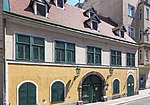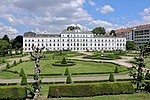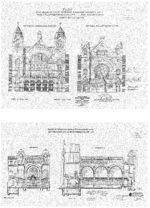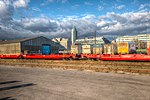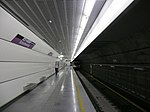Palais Augarten

Palais Augarten is a Baroque palace in the district of Leopoldstadt, Vienna, Austria. Constructed in the late seventeenth century by Johann Bernhard Fischer von Erlach on the site of a Jagdschloss and gardens, the palace and gardens were expanded in the nineteenth century under Emperor Franz Joseph I of Austria. Despite extensive damage suffered during World War II, the palace has been maintained almost in its original appearance, and many of the original furnishings can still be found there. Today, Palais Augarten is the home and rehearsal space of the Vienna Boys' Choir, who also have their own school there. The palace is located in the 130-acre Augarten park, which is the oldest Baroque garden in Vienna.
Excerpt from the Wikipedia article Palais Augarten (License: CC BY-SA 3.0, Authors, Images).Palais Augarten
Obere Augartenstraße, Vienna KG Leopoldstadt (Leopoldstadt)
Geographical coordinates (GPS) Address External links Nearby Places Show on map
Geographical coordinates (GPS)
| Latitude | Longitude |
|---|---|
| N 48.222222222222 ° | E 16.379444444444 ° |
Address
Augartenpalais
Obere Augartenstraße 1
1020 Vienna, KG Leopoldstadt (Leopoldstadt)
Austria
Open on Google Maps

